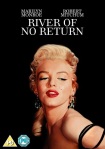I swore I’d wouldn’t be posting just reviews of films all this year, but I had bad flu for a week, which meant I watched a lot of films and did very little blogging. So I’ve a backlog to clear. One more of these and I’ll up to date, and hopefully after that, their frequency will decrease… and lots of other content will start appearing instead. Hopefully.
 Princess from the Moon, Kon Ichikawa, (1987, Japan). The only other Ichikawa film I’d seen before watching this was The Burmese Harp, which is excellent. So I expected good things of Princess from the Moon, despite the awful title and cover art. Sadly, the latter were indicative of the contents. As the title suggests, a baby arrives myteriously – well, in a meteorite – in Japan, and a family adopt the baby and bring her up as their own. It’s the Superman origin story without the superpowers. Okay, with the superpowers. Because the young woman does have strange powers. However, unlike Superman, she is eventually reunited with her people when a UFO, in a scene somewhat reminiscent of Close Encounters of the Third Kind, or is it ET: The Extra-Terrestrial, comes to Earth and she departs on it. Meanwhile, she proves so popular among the local menfolk, and indeed further afield, that she has to set them tasks in order to manage their advances. The film aparently did not do well and, despite the presence of Toshiro Mifune as the man who discovers the “princess”, it’s not easy to see why. The tone is all over the place, and Ichikawa adds nothing to a well-used story. Apparently, the dragon was originally going to double as the Loch Ness Monster in a Hammer film but the project fell through.
Princess from the Moon, Kon Ichikawa, (1987, Japan). The only other Ichikawa film I’d seen before watching this was The Burmese Harp, which is excellent. So I expected good things of Princess from the Moon, despite the awful title and cover art. Sadly, the latter were indicative of the contents. As the title suggests, a baby arrives myteriously – well, in a meteorite – in Japan, and a family adopt the baby and bring her up as their own. It’s the Superman origin story without the superpowers. Okay, with the superpowers. Because the young woman does have strange powers. However, unlike Superman, she is eventually reunited with her people when a UFO, in a scene somewhat reminiscent of Close Encounters of the Third Kind, or is it ET: The Extra-Terrestrial, comes to Earth and she departs on it. Meanwhile, she proves so popular among the local menfolk, and indeed further afield, that she has to set them tasks in order to manage their advances. The film aparently did not do well and, despite the presence of Toshiro Mifune as the man who discovers the “princess”, it’s not easy to see why. The tone is all over the place, and Ichikawa adds nothing to a well-used story. Apparently, the dragon was originally going to double as the Loch Ness Monster in a Hammer film but the project fell through.
 Viva, Anna Biller (2007, USA). I’d rented Biller’s The Love Witch on a whim, and been impressed enough by it to add her first feature film, Viva, to my rental list. It’s nowhere near as polished a piece, and in many respects a much less subtle pastiche. Which is not necessarily a bad thing – Biller is certianly a singular talent, devoted to pastiching 1970s aesthetics and B-movies, but with feminists sensibilities. It can make for an uneasy mix. While her sensibilities are unimpeachable, her dedication to the look and feel of the films she’s spoofing does tend to place them closer to their inspirations than the twenty-first century. Biller plays a Los Angeles housewife in the early 1970s who, with a friend, is persuaded to expand her sexual horizons by moonlighting as an escort (using the name “Viva”). There are a lot of very stilted conversations between the characters, and everything is colourised to an eye-bruising degree. Later, Viva ends up at an orgy, and it’s the sort of thing you’d expect in a Russ Meyer, although without the focus on women’s chests. The end result is far less clever than The Love Witch, and embarrassingly gauche in places, but certainly shows what Biller is about and attempting to do. Seen before The Love Witch, I suspect it might misinform viewers as to Biller’s intentions; seen after it, the films feels like a work in progress. She will go on to amazing things, I’m sure of it. Viva is part of the process.
Viva, Anna Biller (2007, USA). I’d rented Biller’s The Love Witch on a whim, and been impressed enough by it to add her first feature film, Viva, to my rental list. It’s nowhere near as polished a piece, and in many respects a much less subtle pastiche. Which is not necessarily a bad thing – Biller is certianly a singular talent, devoted to pastiching 1970s aesthetics and B-movies, but with feminists sensibilities. It can make for an uneasy mix. While her sensibilities are unimpeachable, her dedication to the look and feel of the films she’s spoofing does tend to place them closer to their inspirations than the twenty-first century. Biller plays a Los Angeles housewife in the early 1970s who, with a friend, is persuaded to expand her sexual horizons by moonlighting as an escort (using the name “Viva”). There are a lot of very stilted conversations between the characters, and everything is colourised to an eye-bruising degree. Later, Viva ends up at an orgy, and it’s the sort of thing you’d expect in a Russ Meyer, although without the focus on women’s chests. The end result is far less clever than The Love Witch, and embarrassingly gauche in places, but certainly shows what Biller is about and attempting to do. Seen before The Love Witch, I suspect it might misinform viewers as to Biller’s intentions; seen after it, the films feels like a work in progress. She will go on to amazing things, I’m sure of it. Viva is part of the process.
 A Man Vanishes, Shohei Imamura (1967, Japan). My previous experience of Imamura, The Ballad of Narayama (see here), I really did not like, but I suspect I added A Man Vanishes to my rental list based on the description rather than the name of the director. And I’m glad I did. The film starts out as a straightforward documentary on the case of a Japanese salaryman who simply disappeared. Bu then the documentary begins to question its own remit, and in a scene toward the end, the set is demolished around the filmmakers as they discuss what they have filmed, revealing the documentary itself to have been a fictional construct. It is astonishingly meta, and astonishingly informed about its own nature. I’m not sure what to make of it – it deconstructs itself from the inside in a way that I had frankly not thought within the vocabulary of 1960s film-makers. It’s clever in a way that far too few films are, and even fewer documentaries are. I thought it excellent.
A Man Vanishes, Shohei Imamura (1967, Japan). My previous experience of Imamura, The Ballad of Narayama (see here), I really did not like, but I suspect I added A Man Vanishes to my rental list based on the description rather than the name of the director. And I’m glad I did. The film starts out as a straightforward documentary on the case of a Japanese salaryman who simply disappeared. Bu then the documentary begins to question its own remit, and in a scene toward the end, the set is demolished around the filmmakers as they discuss what they have filmed, revealing the documentary itself to have been a fictional construct. It is astonishingly meta, and astonishingly informed about its own nature. I’m not sure what to make of it – it deconstructs itself from the inside in a way that I had frankly not thought within the vocabulary of 1960s film-makers. It’s clever in a way that far too few films are, and even fewer documentaries are. I thought it excellent.
 Die Puppe, Ernst Lubitsch (1919, Germany). I think it was this film, of all the ones in this box set, which persuaded me to add it to my shopping basket during Eureka’s Boxing Day Sale. Ossi Oswalda plays the daughter of a toymaker who takes the place of a life-size doll bought by the local baron’s son who needs to marry but is not interested in doing so. So he marries the doll. Which is not a doll. He only married her because he had fallen under the spell on a local friary who hoped to use the dowry to fund their gluttony. So of course they’re a bit upset when it transpires the doll is a real woman. And he falls for her, so they’ll be keeping the dowry, thank you very much. Like the previous film in this set, Ich möchte kein Mann sein (see here), Die Puppe is played strictly for laughs, and Oswalda in the title role makes the film. It’s a thin premise, and not especially plausible, but the movie totally commits to it. It’s a more stagey film than the earlier one, with the action taking place on what are clearly stage-sets – and that includes the town square which features in the opening. Fun, but one for fans of silent movies, I suspect.
Die Puppe, Ernst Lubitsch (1919, Germany). I think it was this film, of all the ones in this box set, which persuaded me to add it to my shopping basket during Eureka’s Boxing Day Sale. Ossi Oswalda plays the daughter of a toymaker who takes the place of a life-size doll bought by the local baron’s son who needs to marry but is not interested in doing so. So he marries the doll. Which is not a doll. He only married her because he had fallen under the spell on a local friary who hoped to use the dowry to fund their gluttony. So of course they’re a bit upset when it transpires the doll is a real woman. And he falls for her, so they’ll be keeping the dowry, thank you very much. Like the previous film in this set, Ich möchte kein Mann sein (see here), Die Puppe is played strictly for laughs, and Oswalda in the title role makes the film. It’s a thin premise, and not especially plausible, but the movie totally commits to it. It’s a more stagey film than the earlier one, with the action taking place on what are clearly stage-sets – and that includes the town square which features in the opening. Fun, but one for fans of silent movies, I suspect.
 Dekalog*, Krzysztof Kieślowski (1989, Poland). In terms of Polish cinema’s exposure to the English-speaking world, Kieślowski is a giant. Poland had a huge film industry, and has produced a great number of world-class directors, many of which have been released in Anglophone markets. So quite why Kieślowski has come to be seen as the quintessential Polish director is something of a mystery, especially given the paucity of his oeuvre compared to others such as Andrzej Wajda or Agnieska Holland. The same, I suppose, might also be said of Satyajit Ray and Bengali cinema – Ray is comprehensively released on DVD on the UK, but none of Mrinal Sen’s movies are available in UK releases. But then Ray had Ismail Merchant proselytising for him in the West, probably because Ray was helpful toward Merchant and Ivory during the early days of their career. I don’t know that Kieślowski did the same for an Anglophone director, but I’ve seen no evidence he did. Which does make his selection as the face of Polish cinema somewhat inexplicable. He’s good, there’s no doubt about that. But, I’ve come to feel, middle-brow and you’d expect a director with such a high profile to be more, well, cerebral. But then perhaps Kieślowski’s reputation was formed by his TV work, which this box set has shown is superior to his feature film work. The Dekalog itself, ten one-hour long episodes, each of which illustrates one of the Ten Commandments, and all of which are set in the same block of apartments in Warsaw. Some are better than others; some are even somewhat opaque, with a far from obvious link to the Commandment they are intended to illustrate. Two of the episodes, five and six, were later remade as feature films, A Short Film About Killing and A Short Film About Love. They’re probably the two strongest episodes. This box set was definitely worth getting, just as much for the TV films and special features as for the Dekalog series itself.
Dekalog*, Krzysztof Kieślowski (1989, Poland). In terms of Polish cinema’s exposure to the English-speaking world, Kieślowski is a giant. Poland had a huge film industry, and has produced a great number of world-class directors, many of which have been released in Anglophone markets. So quite why Kieślowski has come to be seen as the quintessential Polish director is something of a mystery, especially given the paucity of his oeuvre compared to others such as Andrzej Wajda or Agnieska Holland. The same, I suppose, might also be said of Satyajit Ray and Bengali cinema – Ray is comprehensively released on DVD on the UK, but none of Mrinal Sen’s movies are available in UK releases. But then Ray had Ismail Merchant proselytising for him in the West, probably because Ray was helpful toward Merchant and Ivory during the early days of their career. I don’t know that Kieślowski did the same for an Anglophone director, but I’ve seen no evidence he did. Which does make his selection as the face of Polish cinema somewhat inexplicable. He’s good, there’s no doubt about that. But, I’ve come to feel, middle-brow and you’d expect a director with such a high profile to be more, well, cerebral. But then perhaps Kieślowski’s reputation was formed by his TV work, which this box set has shown is superior to his feature film work. The Dekalog itself, ten one-hour long episodes, each of which illustrates one of the Ten Commandments, and all of which are set in the same block of apartments in Warsaw. Some are better than others; some are even somewhat opaque, with a far from obvious link to the Commandment they are intended to illustrate. Two of the episodes, five and six, were later remade as feature films, A Short Film About Killing and A Short Film About Love. They’re probably the two strongest episodes. This box set was definitely worth getting, just as much for the TV films and special features as for the Dekalog series itself.
 Hidden Figures, Theodore Melfi (2016, USA). The US is very good at making films that show racist it once was but which reveal how racist it still is. On the surface, Hidden Figures cannot be faulted – women of colour were involved in the US space programme and they have a story worth telling, if only to show people they were involved. But in an effort to create drama, Hidden Figures creates situations which undo the achievements of the people it is trying to celebrate. It’s not as blindingly obvious as Kevin Costner ripping down the “Whites Only” sign on the women’s toilet, an entirely invented scene since the NASA facilities were not segregated so there was no need of a white saviour… but also the fact the film’s event are implied to take place during the late 1950s when Katherine Johnson is promoted to the Mercury Task Group, but she had been made a supervisor over a decade before in 1948. There’s no doubt the contribution of women of colour, or indeed women, to the Space Race has been forgotten, if not outright written from history; but the real histories of these people are dramatic enough without having to make changes. The fact the US practiced segregation some fifty years ago is frightening, and yet not all that much has changed – hence the need for films such as this. Black people have been so written out of history – US especially – they cannot see themselves in it, despite their many and varied and important contributions to it. They are there, doing their bit, and only a racist or a fool would say otherwise. On the one hand, I think Hidden Figures‘s purpose is admirable and I welcome the film’s existence; on the other, I rue that it has to exist in the first place, and that it has to warp history to provide a narrative acceptable to the public. But it’s not a great film, and I suspect you’d get more from the book on which it was based.
Hidden Figures, Theodore Melfi (2016, USA). The US is very good at making films that show racist it once was but which reveal how racist it still is. On the surface, Hidden Figures cannot be faulted – women of colour were involved in the US space programme and they have a story worth telling, if only to show people they were involved. But in an effort to create drama, Hidden Figures creates situations which undo the achievements of the people it is trying to celebrate. It’s not as blindingly obvious as Kevin Costner ripping down the “Whites Only” sign on the women’s toilet, an entirely invented scene since the NASA facilities were not segregated so there was no need of a white saviour… but also the fact the film’s event are implied to take place during the late 1950s when Katherine Johnson is promoted to the Mercury Task Group, but she had been made a supervisor over a decade before in 1948. There’s no doubt the contribution of women of colour, or indeed women, to the Space Race has been forgotten, if not outright written from history; but the real histories of these people are dramatic enough without having to make changes. The fact the US practiced segregation some fifty years ago is frightening, and yet not all that much has changed – hence the need for films such as this. Black people have been so written out of history – US especially – they cannot see themselves in it, despite their many and varied and important contributions to it. They are there, doing their bit, and only a racist or a fool would say otherwise. On the one hand, I think Hidden Figures‘s purpose is admirable and I welcome the film’s existence; on the other, I rue that it has to exist in the first place, and that it has to warp history to provide a narrative acceptable to the public. But it’s not a great film, and I suspect you’d get more from the book on which it was based.
1001 Movies You Must See Before You Die count: 895















































